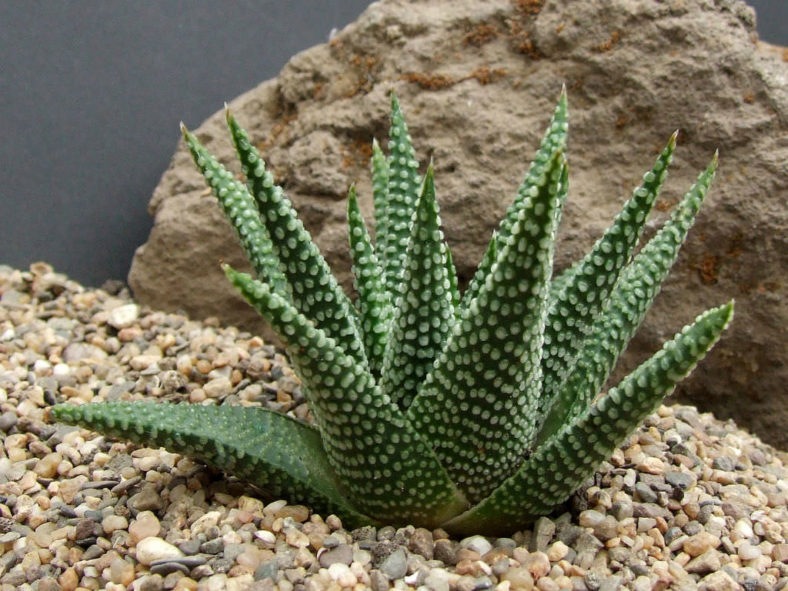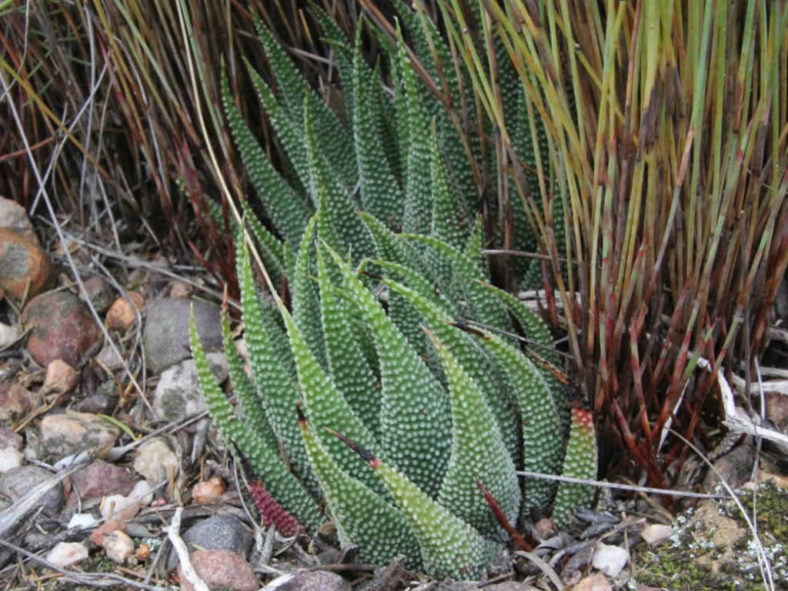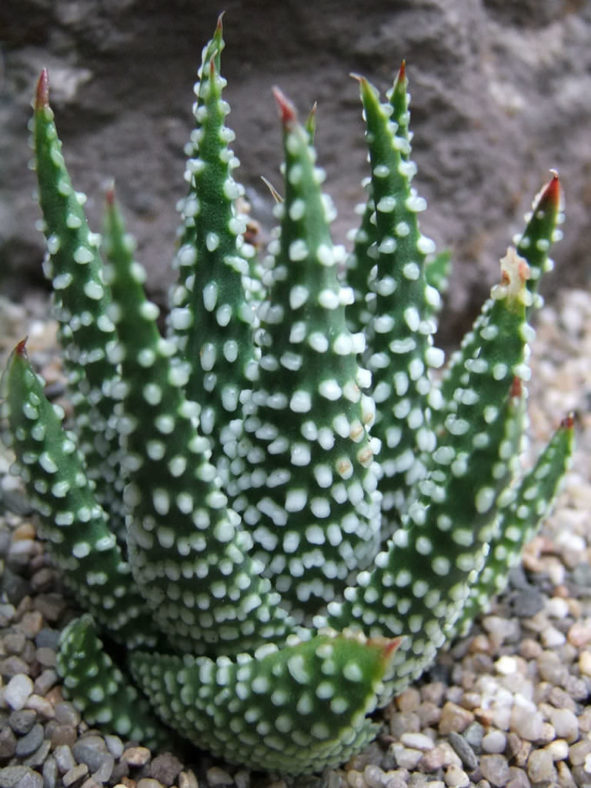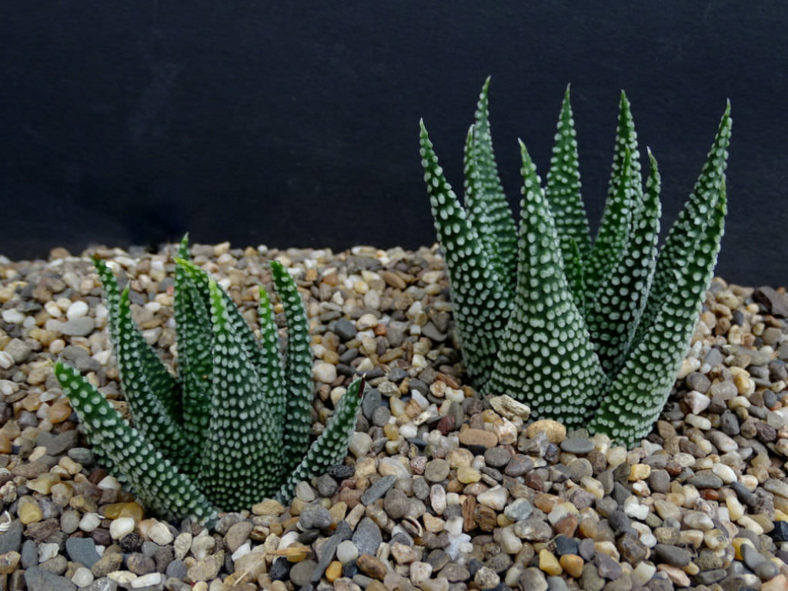Scientific Name
Tulista opalina (M.Hayashi) Breuer
Accepted Scientific Name
Tulista minor (Aiton) Gideon F.Sm. & Molteno
Synonym(s)
Haworthia opalina
Scientific Classification
Family: Asphodeloideae
Subfamily: Asphodeloideae
Tribe: Aloeae
Genus: Tulista
Etymology
The specific epithet "opalina (op-al-EYE-nuh)" means "opal-like" and refers to the glossy transparent tubercles on the leaves.
Origin
Formerly treated as a separate species, this rare succulent is now considered a synonym of Tulista minor. It is native to South Africa (a small area on the farm Brandrivier between Garcia's Pass and Barrydale in Western Cape).
Description
Tulista opalina, formerly known as Haworthia opalina, is an attractive small succulent that forms a rosette of thick, fleshy, stiff, light green leaves covered with glossy transparent tubercles. The rosette grows slowly, usually remains solitary, and can reach up to 6 inches (15 cm) in diameter.
The white flowers with pink tips appear on slender stalks in summer.

How to Grow and Care for Tulista opalina
Light: Tulistas tolerate full sun but prefer semi-shaded positions. Any window in your home or office will likely be appropriate for them.
Soil: Use commercial soil formulated for succulents or make your own well-draining potting mix.
Hardiness: Tulista opalina can withstand temperatures as low as 30 to 50 °F (-1.1 to 10 °C), USDA hardiness zones 10a to 11b.
Watering: In spring and fall, when the growth is most active, water Tulistas thoroughly, then wait until the top of the soil dries out before watering again. Water your plants less during the winter when their growth slows down significantly. During the hottest summer months, when Tulistas are mostly dormant, water it just enough to keep the leaves from shriveling.
Fertilizing: Tulistas do not require much fertilizer. However, for optimum growth, fertilizing is a good idea. Feed during the growing season with a weak fertilizer solution. Do not fertilize during the winter.
Repotting: When your Tulista begins to outgrow its pot, repot it in a new shallow and slightly larger pot with fresh soil. The best time to repot is in the spring or early summer.
Propagation: Using seeds or separating offsets are the most frequently used methods for propagation of this plant.
Learn more at How to Grow and Care for Tulista.
Toxicity of Tulista opalina
Tulistas are generally non-toxic to humans and animals.
Links
- Back to genus Tulista
- Succupedia: Browse succulents by Scientific Name, Common Name, Genus, Family, USDA Hardiness Zone, Origin, or cacti by Genus
Photo Gallery
Click on a photo to see a larger version.


